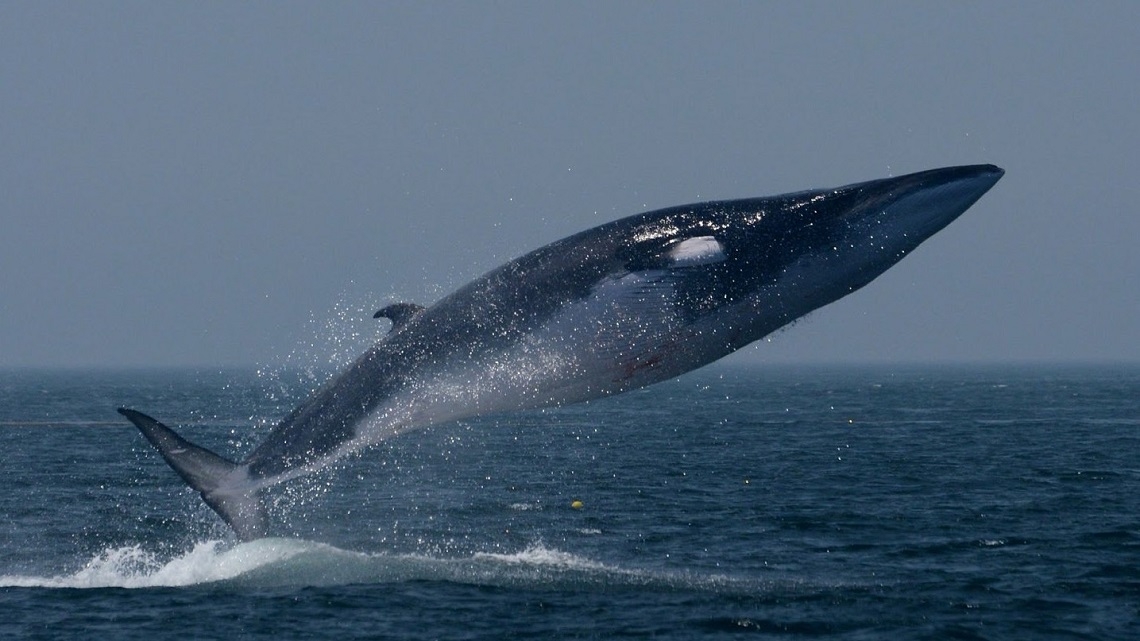The fin whale, also known as finback whale or common rorqual and formerly known as herring whale or razorback whale, is a cetacean belonging to the parvorder of baleen whales. It is the second-longest species of cetacean on Earth after the blue whale. The largest one reportedly grow to 27.3 m (89.6 ft) long.
The fin whale’s body is long and slender, coloured brownish-grey with a paler underside. At least two recognized subspecies exist, in the North Atlantic and the Southern Hemisphere. It is found in all the major oceans, from polar to tropical waters. It is absent only from waters close to the pack ice at the poles and relatively small areas of water away from the open ocean. The highest population density occurs in temperate and cool waters. Its food consists of small schooling fish, squid, and crustaceans including copepods and krill.
Like all other large whales, the fin whale was heavily hunted during the 20th century. As a result, it is an endangered species. Over 725,000 fin whales were reportedly taken from the Southern Hemisphere between 1905 and 1976. Global population estimates range from less than 100,000 to roughly 119,000.
- Mass: 48,000 kg (Adult)
- Length: 18 – 20 m (Northern hemisphere population, Adult)
- Scientific name: Balaenoptera physalus
- Speed: 47 km/h (Maximum, In Short Bursts)
- Family: Balaenopteridae
- Phylum: Chordata
- Order: Artiodactyla
